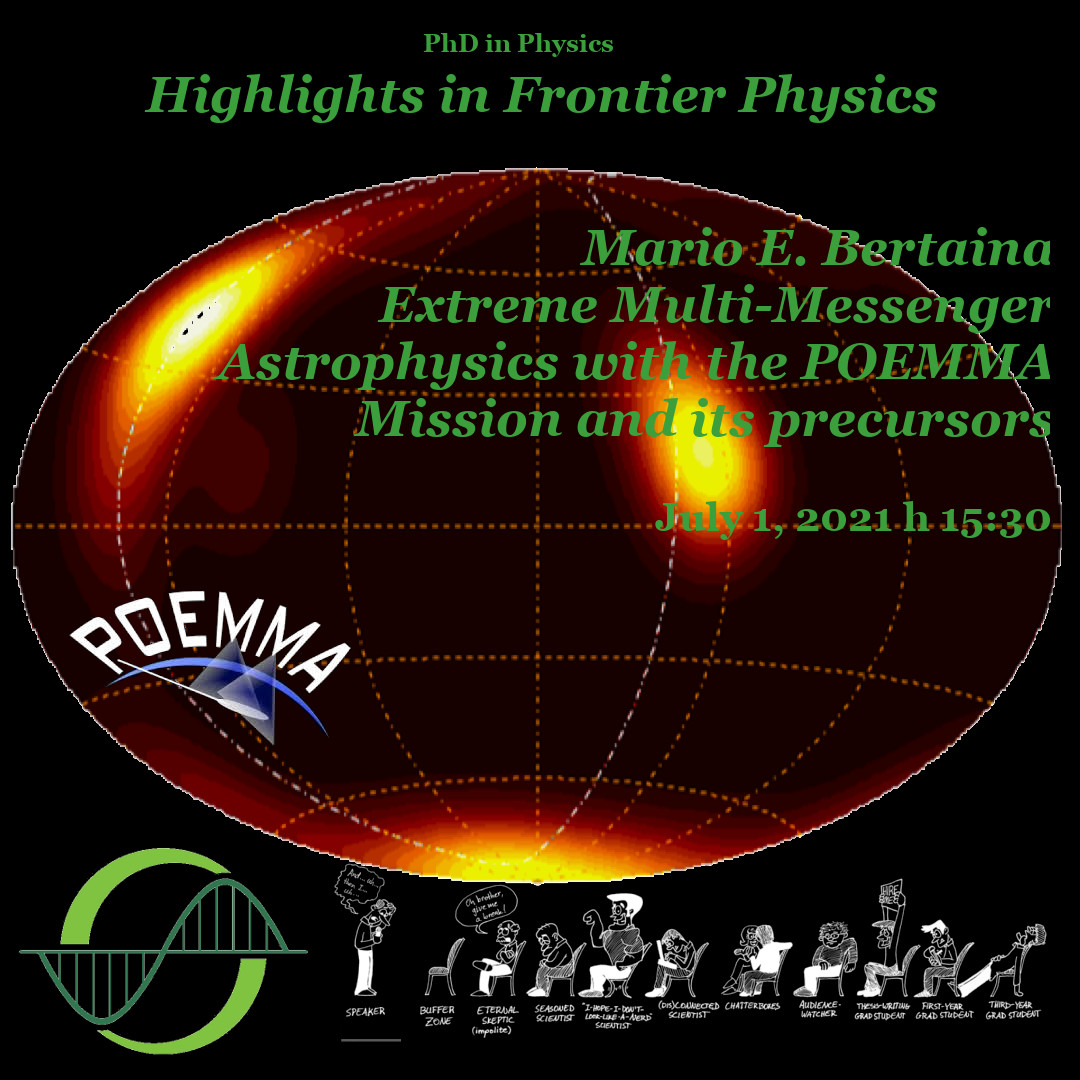Extreme Multi-Messenger Astrophysics with the POEMMA Mission and its precursors

On July 1, 2021, starting at 15:30, Professor Mario E. Bertaina (Torino) will talk on Extreme Multi-Messenger Astrophysics with the POEMMA Mission and its precursors.
The seminar will take place online.
Abstract. The origin and nature of Ultra-High Energy Cosmic Rays (UHECRs) remain unsolved in contemporary astroparticle physics. To give an answer to these questions is rather challenging because of the extremely low flux of a few per km^2 per century at extreme energies (i.e. E > 5x10^19eV). A super-wide-field telescope looking down from space onto the night sky to detect UV photons emitted by Extensive Air Showers (EAS) generated by UHECRs in the atmosphere might provide an effective solution to this difficulty. The Probe Of Extreme Multi-Messenger Astrophysics (POEMMA) has been designed to measure UHECRs and observe cosmic neutrinos from space and with sensitivity over the full celestial sky for these extremely energetic cosmic messengers. POEMMA will observe the extensive air showers (EASs) from UHECRs and UHE neutrinos above 20 EeV via air fluorescence. Additionally, for cosmic neutrinos above 20 PeV POEMMA will observe the Cherenkov signal from upward-moving EASs induced by Earth-interacting tau neutrinos. Developed as NASA Astrophysics Probe-class mission, POEMMA consists of two identical satellites flying in loose formation and 525 km altitude orbits. Each POEMMA instrument incorporates a wide field-of-view (45°) Schmidt telescope with over 6 m2 of collecting area. In a 5-year mission, POEMMA will provide measurements that open new multi-messenger windows onto the most energetic events in the universe, enabling the study of new astrophysics and particle physics at these otherwise inaccessible energies. During this seminar a review of the main open points in UHECR science, the observational techniques employed to detect EAS and of the challenges and methodology of their observation from space will be reviewed. The POEMMA mission, within the JEM-EUSO program, will be used as a case study to learn how to move from a conceptual study to a real mission by means of different technological achievements on stratospheric balloons and from space with particular emphasis on the EUSO-SPB2 and Mini-EUSO missions.